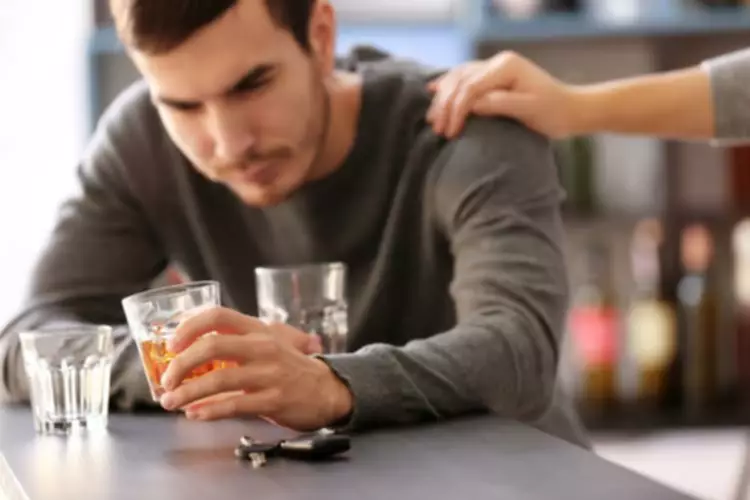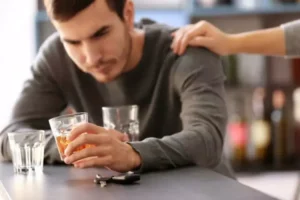
I turn to art therapy because it offers a fresh lens through which to view the recovery journey. This therapeutic activity is designed to encourage indirect reflection about the origins and effects of a whole host of behavioral health concerns. Patients make a addiction recovery art project ideas visual representation of their lives by drawing a timeline that begins on the year of their birth and ends with the current year. They are then guided to think about the most significant events of their lives, both good and bad.
- A big part of the 12 Steps is self-reflection which art therapy facilitates.
- Join us as we explore the profound impact of hobbies on the addiction recovery process and introduce 17 activities to consider for those on this healing path.
- Let the canvas of your recovery continue to evolve, and may your creativity light the way to a fulfilling and sober life.
- What works for one person may not resonate with another, so flexibility and a diverse toolkit of techniques are essential.
- Learning to process these overwhelming emotions is one of the most important steps towards long-term recovery.
Learn to live a Sober, Vibrant & Substance-Free Life
Moving to the next creative activity, we’ll look at how you can capture moments of clarity and personal milestones through another powerful medium—photography. The constraints of poetic form – whether following traditional structures or freestyle verse – can offer a helpful guide when emotions feel tumultuous and overwhelming. Poetry, in particular, adds structure and a sense of rhythm that can bring a unique element of reflection and expression. These tools promote experimentation and playfulness, sometimes easing the pressure found in traditional art forms. Or, the ease of creating a simple animation could provide a way to visualize the ups and downs of recovery. Seeing a physical artifact of your progress fortifies the belief in your ability to change and heal.
Merely Creative’s Commitment to Sobriety Support

Reduction of cortisol levels and participants’ responses following art making. Join 40,000+ People Who Receive Our Newsletter Get valuable resources on addiction, recovery, wellness, and our treatments delivered directly to your inbox. Seeking treatment from experienced rehab and recovery professionals can increase your odds of kicking your old habits and preventing relapse in the future.
- Art brings people together, and whatever you choose to create will bring in new connections who can have whatever role you want them to in your recovery.
- This valuable resource is perfect for those seeking to explore the healing potential of art therapy.
- These groups offer solace in shared experiences and provide an essential platform to learn coping strategies, receive mentorship, and foster personal growth.
- In the context of addiction recovery, creating mandalas can provide a calming, focused activity that promotes mindfulness and introspection.
- With thank you cards, participants can also paint, draw, or even craft their cards to put a more personal touch on them.
Analisa Six’s Crowdfunding Campaign: A Musical Journey Unveiled
This can be anything from positive affirmations to notes that list goals you want to achieve. Meanwhile, trust an electronic health record like TenEleven to manage the day-to-day of your organization’s administrative duties. To begin, each participant will draw four dots—one in each corner of the paper—and then connect them to draw a square border. Within that square, they can draw lines to create as many sections as they desire and begin drawing dashes, lines, strokes, or dots to create more shapes. The box itself can also be decorated to demonstrate the individual’s idea of self-care.
Progress, Not Perfection In Art Form – Learning How To Paint During Covid By Sober Curator Ashley Sunderland
Sculpture making allows individuals in addiction recovery to engage with art materials in a tactile and three-dimensional way. By working with clay, wire, or other sculpting materials, participants can explore their creativity, improve focus, and develop a sense of accomplishment as they create tangible objects. These innovations may be particularly appealing to younger generations or those who are more comfortable with digital mediums.
- The lighthouse activity is designed to give participants hope for their future.
- In closing, I encourage you to take what you’ve learned and embrace art’s transformative power.
- It’s a form of communication that transcends verbal limitations, allowing individuals to tap into deeper levels of understanding and self-awareness.
- As paintbrushes dance across canvases and clay takes form under gentle hands, a profound transformation begins to unfold.
- A great way to not only create addiction artwork but to utilize it for your sobriety is by making a memory box.
- Modern Art therapy is constantly evolving, and digital media opens up a whole new world of creative possibilities.
The Intersection of Art Therapy, Personal Development, and Self-Discovery

This simple yet profound concept lies at the heart of art therapy, a powerful approach to healing that has been gaining recognition in recent years. For those unable to attend in-person sessions, at-home art therapy exercises can provide ongoing recovery support. Simple activities like keeping an art journal or engaging in daily sketching can help individuals maintain their connection to the therapeutic benefits of creative expression. Online resources and virtual art therapy sessions have made these practices more accessible than ever before. Body outline drawing is an art therapy exercise that helps individuals in addiction recovery develop a greater sense of self-awareness and connection to their physical and emotional states. Collaborative mural painting is a powerful art therapy exercise that fosters a sense of community and support among individuals in addiction recovery.

- Aside from healthy activities like regular exercise and art therapy, attending group therapy or individual therapy are critical to maintaining sobriety.
- A skilled art therapist will work with each person to find the most effective and engaging approaches.
- Whenever you’re feeling down or struggling with something, you can look back at these pictures and be reminded of your accomplishments.
- Group art projects can be particularly effective in building support networks.
You don’t need special tools or a deep understanding of the arts to get started in an art therapy program for substance abuse disorders. To start art therapy and really have the program make a difference, patients need to be committed to getting clean and staying sober. Facing the possibility of life without drugs and alcohol can be scary, but it is the best way for you to move forward. Addiction recovery is a complex and multifaceted journey that involves physical, emotional, and mental healing.

The visual cortex processes colors and shapes, while the motor cortex coordinates our movements. Meanwhile, the prefrontal cortex—responsible for decision-making and emotional regulation—gets a workout as we choose colors, plan compositions, and express our feelings through our creations. There are countless studies2 that have proven the efficacy of art therapy in relation to mental health and substance abuse disorders. There is definitive proof that art therapy can help people deal with many problems, including emotional distress, emotional trauma, mental disorders, and substance abuse disorders.